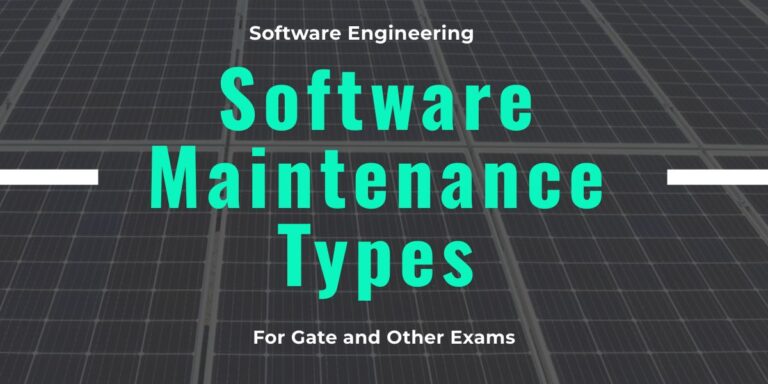
Requirement Gathering Techniques
Requirement gathering is the first and most important step in the Requirements Phase of the Software Development Life Cycle (SDLC). This process involves collecting all the necessary information about the needs, expectations, and constraints of the stakeholders (such as users, clients, and developers) to build software that fulfills their objectives.
There are several techniques used in requirement gathering, each suited for different types of projects and stakeholder interactions. Below are some of the most commonly used techniques:
1. Interviews
Purpose: To collect detailed information through one-on-one discussions with stakeholders.
How it Works:
- Conduct formal or informal interviews with users, business owners, and other stakeholders.
- Use open-ended or closed-ended questions to elicit information about the system’s needs, problems, and expectations.
Advantages:
- Personalized and detailed information can be gathered.
- Provides a direct understanding of user requirements.
Challenges:
- Time-consuming.
- May not always represent the views of all stakeholders.
2. Surveys/Questionnaires
Purpose: To collect information from a large number of stakeholders in a structured manner.
How it Works:
- Distribute surveys or questionnaires with a set of questions designed to gather specific data.
- Responses can be quantitative (e.g., Likert scale) or qualitative (open-ended questions).
Advantages:
- Can reach a large number of stakeholders quickly and at low cost.
- Helps gather both quantitative and qualitative data.
Challenges:
- Responses can be superficial if questions aren’t well-defined.
- Potential for low response rates.
3. Workshops
Purpose: To gather and define requirements collaboratively with stakeholders through facilitated sessions.
How it Works:
- Gather all relevant stakeholders in a workshop setting to discuss the system’s needs and constraints.
- Use techniques like brainstorming, role-playing, or group discussions to generate ideas.
Advantages:
- Promotes collaboration and helps discover requirements that stakeholders might not have considered.
- Can quickly address conflicting viewpoints and reach consensus.
Challenges:
- Time-consuming, especially if stakeholders have conflicting ideas.
- Requires skilled facilitators to manage discussions and keep the focus.
4. Observation (Job Shadowing)
Purpose: To understand the day-to-day tasks, workflows, and challenges of users by observing them.
How it Works:
- Observe users or business professionals as they perform their tasks.
- Gather insights into their workflows, processes, pain points, and needs.
Advantages:
- Helps gather authentic, real-time data on how users interact with systems.
- Provides a deep understanding of users’ daily tasks and pain points.
Challenges:
- May be difficult to observe without interrupting users’ workflows.
- May not uncover all requirements, as users may not be aware of potential solutions.
5. Brainstorming
Purpose: To generate ideas and solutions in an open, creative environment.
How it Works:
- A group of stakeholders and team members come together to brainstorm ideas about the system’s requirements, functionality, and design.
- Ideas are shared freely, and the group discusses them without judgment or filtering.
Advantages:
- Encourages creative thinking and diverse ideas.
- Helps identify innovative solutions and new features.
Challenges:
- Ideas can be unstructured, which might lead to confusion.
- Requires proper facilitation to stay on track and avoid chaos.
6. Use Cases and User Stories
Purpose: To capture and describe how the system will interact with users and other systems.
How it Works:
- Use Cases describe the interactions between users (actors) and the system to achieve a goal (e.g., a user logs in to access their account).
- User Stories are short, simple descriptions of a feature told from the perspective of the end-user (e.g., “As a user, I want to reset my password so that I can regain access to my account”).
Advantages:
- Provides a clear understanding of user requirements and system interactions.
- Easy to prioritize and break down into smaller tasks during development.
Challenges:
- May require additional effort to write detailed and precise use cases or stories.
- Not always comprehensive, especially for complex systems.
7. Document Analysis
Purpose: To gather requirements by reviewing existing documentation, such as current system manuals, business process documentation, or regulatory guidelines.
How it Works:
- Analyze existing documentation, such as reports, system specifications, and user manuals, to understand current system requirements and constraints.
Advantages:
- Provides historical data and insights into existing systems.
- Reduces the need to gather redundant information.
Challenges:
- May miss out on user-specific requirements not covered in the documentation.
- Older documents may be outdated and no longer relevant.
8. Prototyping
Purpose: To create an early, working version (prototype) of the software that allows users to interact with it and provide feedback.
How it Works:
- Develop a low-fidelity or high-fidelity prototype to visualize system features and functionalities.
- Users interact with the prototype and give feedback, which is used to refine the requirements.
Advantages:
- Provides a tangible representation of the software for users to evaluate.
- Allows early detection of misunderstandings or feature changes.
Challenges:
- Creating prototypes can be time-consuming.
- Prototypes might not fully represent the final product, leading to misconceptions.
9. Story boarding
Purpose: To visually represent the flow of the application or website, helping users and stakeholders better understand the system.
How it Works:
- Use sketches or digital tools to create a series of images that represent key user interactions or system flows.
Advantages:
- Provides a visual representation of the user experience.
- Easier for users to grasp and provide feedback on.
Challenges:
- Not always accurate or comprehensive for complex systems.
- Can be time-consuming to create.
10. Competitive Analysis
Purpose: To identify and analyze features offered by competing or similar systems.
How it Works:
- Study competitors’ products or solutions to understand industry standards and identify potential features for the new system.
- Focus on functionality, usability, and design.
Advantages:
- Helps ensure the product is competitive in the market.
- Provides insight into features that users expect from similar software.
Challenges:
- May lead to “me-too” solutions if not carefully analyzed.
- Doesn’t always reflect the unique needs of the current project or users.
Conclusion:
Each requirement gathering technique has its strengths and is suited for different contexts or stages of the project. Often, a combination of these techniques is used to gather comprehensive, accurate, and useful requirements. The key is to engage stakeholders early and often, ensuring that the software meets their needs and expectations.







I absolutely love your blog and find the majority of your post’s to be precisely what I’m looking for. Would you offer guest writers to write content to suit your needs? I wouldn’t mind publishing a post or elaborating on most of the subjects you write regarding here. Again, awesome web log!